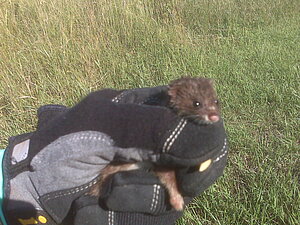
Our primary objective is to determine the relationship between Cryptosporidium in wildlife and surface water.
Wildlife are a major source of Cryptosporidium contamination in North American surface water. Given the host adapted nature of Cryptosporidium, most species and genotypes associated with wildlife are not pathogenic for humans or agricultural animals. Yet current policies and regulations do not differentiate between these relatively benign species and genotypes and the pathogenic species that originate from agricultural and human activities. It is critical that we determine the precise role of wildlife in the waterborne transmission of Cryptosporidium so that we can better understand the public health significance of contamination events in surface waters. The objective of this section is to determine the relationship between Cryptosporidium in wildlife and surface water.
Some of our significant findings to date include:
- Voles, white footed mice, and shrews are all sources of Cryptosporidium surface water contamination.
- Muskrats, squirrels, and deer mice may also be sources.
- Human pathogenic Cryptosporidium parvum was found in squirrels and voles and a single water sample.
- The cervine genotype, which is an occasional cause of human disease, was primarily found in squirrels and voles and was also found in a single water sample.
- Host population diversity and density can impact the prevalence of Cryptosporidium.
- The Red River experienced record flooding during the spring thaw of 2009. We collected samples during this major flood event and determined that the prevalence of Cryptosporidium in the Red River during peak flooding was 69% and that cattle were the primary source.